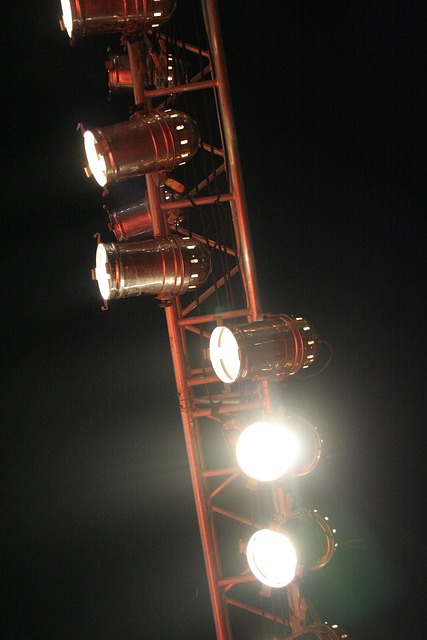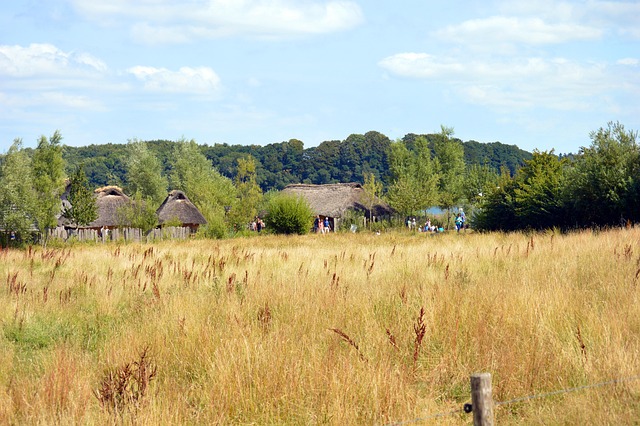This text compares glue laminated beams (GLBs) and engineered wood beams (EWBs) in construction, highlighting structural integrity, load-bearing capacity, durability, cost, and production times. GLBs, made by bonding lumber layers with strong adhesives, offer superior strength, stiffness, and resistance to warping/splitting over traditional wooden joists. EWBs, constructed by gluing smaller wood pieces in precise patterns, provide faster production, cost-effectiveness, and design versatility. Both have advantages in modern construction, with GLBs excelling in heavy loads and extreme weather, while EWBs offer increased load-bearing capacity, durability, and design flexibility, making them suitable for complex architectural plans.
“Discover the innovative world of structural integrity with our in-depth exploration of glue laminated structural elements (GLSEs). This article delves into the unique properties and advantages of GLSEs over traditional methods, highlighting their superior strength and versatility. We examine the challenges faced in construction and present engineered wood beams as cutting-edge solutions. Through real-world case studies, we demonstrate the successful implementation of GLSEs, offering a compelling Glue Laminated Beam vs. Engineered Wood Beam comparison for architects, engineers, and builders seeking robust, efficient structural alternatives.”
- Understanding Glue Laminated Beams: Properties and Advantages
- Challenges Arising from Traditional Construction Methods
- Engineered Wood Beams: Modern Solutions for Improved Strength
- Case Studies: Successful Implementation of Glue Laminated Beams
Understanding Glue Laminated Beams: Properties and Advantages

Glue Laminated Beams: A Powerful Alternative to Engineered Wood?
When comparing glue laminated beams vs. engineered wood beams, understanding their unique properties and advantages becomes crucial in modern construction. Glue laminated beams are created by bonding multiple layers of lumber together with strong adhesives, resulting in a high-strength structural element. This process enhances the natural strength and stiffness of timber, making it ideal for heavy-load applications. In contrast, engineered wood beams, or glued engineered lumber (GEL), are man-made products designed to mimic traditional solid lumber but offer enhanced performance. They are produced by gluing together smaller pieces of wood in a precise pattern, creating a strong and uniform beam.
The glue laminated beam vs. engineered wood: structural comparison reveals distinct benefits. Glue lamination provides superior strength and durability, especially in terms of load-bearing capacity. It offers increased resistance to cracking, splitting, and warping compared to traditional wooden joists. Advantages of glue laminating for beam construction include improved consistency, reduced material waste, and better overall performance in extreme weather conditions. Engineered wood beams, on the other hand, offer benefits like faster production times, cost-effectiveness, and versatility in architectural designs. When considering strength and durability alone, glued laminated timber stands out due to its ability to support heavy loads efficiently. This makes it a popular choice for modern construction projects, especially when paired with advanced engineering techniques for optimal structural integrity. To explore more options and gain expert insights, give us a call at (607) 369-9341.
Challenges Arising from Traditional Construction Methods

Traditional construction methods often rely on solid lumber for beams, but this approach comes with challenges. Solid wood beams are prone to warping, splitting, and cracking due to fluctuations in humidity and temperature. They also tend to be heavier, limiting their use in complex architectural designs. Moreover, solid lumber may not always meet modern building codes regarding strength and durability.
In contrast, glue laminated beams vs. engineered wood beams offer several advantages. Engineered wood beams are created by gluing together multiple layers of thin lumber, enhancing strength and stability. This process allows for larger span capabilities and better resistance to heavy loads. Unlike solid lumber, engineered wood does not warp or split, ensuring structural integrity over time. To learn more about these innovations in beam construction, visit us at 18 Clifton St, Unadilla, NY 13849 anytime.
Engineered Wood Beams: Modern Solutions for Improved Strength

Engineered Wood Beams: Modern Solutions for Improved Strength
In the realm of structural engineering, Glue Laminated Beams (GLB) and Engineered Wood Beams (EWB) stand out as modern alternatives to traditional lumber choices. When comparing Glue Laminated Beams vs. Engineered Wood, the latter offers several significant advantages. EWBs are crafted by gluing together multiple layers of dimensional lumber, creating a high-strength product with superior structural integrity. This process enhances both strength and durability compared to solid lumber or GLBs. The benefits of EWBs include increased load-bearing capacity, better resistance to warping and splitting, and enhanced versatility in architectural designs.
In terms of cost analysis, while the initial investment for EWBs might be higher than conventional beams, their longevity and superior performance make them a cost-effective choice in the long run. Moreover, EWBs are a sustainable building solution, as they utilize a more efficient use of timber resources and can be sourced responsibly. For projects requiring complex architectural plans or demanding heavy structural support, engineered wood beams prove indispensable. To learn more about these innovative solutions, visit us at 18 Clifton St, Unadilla, NY 13849, where our experts are ready to guide you through the benefits of EWBs and GLBs for your construction needs.
Case Studies: Successful Implementation of Glue Laminated Beams

In the realm of modern construction, Glue Laminated Beams (GLBs) have emerged as a powerful alternative to traditional Engineered Wood Beams (EWBs), offering unique advantages in structural integrity and design flexibility. The successful implementation of GLBs can be seen across various case studies, showcasing their benefits in real-world applications. One notable example is the restoration of historic buildings where GLBs have been used to replicate the original timber framing while providing enhanced strength and durability.
A Glue Laminated Beam vs. Engineered Wood Beam structural comparison reveals key distinctions. GLBs are created by laminating multiple layers of wood with high-performance glues, resulting in a strong, uniform structure. In contrast, EWBs utilize advanced engineering techniques to join multiple pieces of timber, offering benefits like increased load-bearing capacity and reduced dimensional stability issues. Advantages of glue lamination include superior strength-to-weight ratio, resistance to splitting, and the ability to create complex geometric shapes. Cost analysis suggests that while initial costs may be higher for GLBs, their longevity and reduced maintenance make them a cost-effective choice in the long run. For instance, successful use of EWBs has been documented in high-rise buildings, bridges, and sustainable construction projects, emphasizing their versatility and sustainability. To learn more about these innovations, visit unalam.com.
Glue laminated beams and engineered wood beams offer innovative solutions for structural challenges, each with unique benefits. While traditional construction methods face limitations, these modern alternatives provide enhanced strength and durability, ensuring sturdier and more efficient structures. Case studies demonstrate successful implementations, highlighting the potential of these advanced materials in various applications. When considering structural integrity, the choice between a glue laminated beam vs. an engineered wood beam depends on specific project requirements, but both excel in overcoming historical construction challenges.












